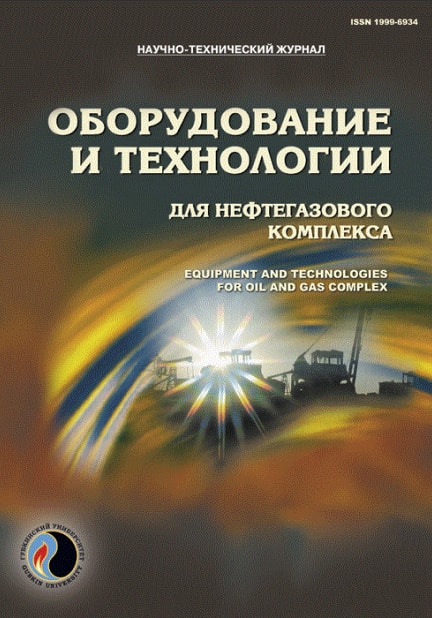Plane-radial water displacement of oil
UDC: 622.279:681.5
DOI: 10.33285/1999-6934-2023-6(138)-47-52
Authors:
TOLPAEV VLADIMIR A. 1
1,
AKHMEDOV KURBAN S. 1
1,
LOSKUTOV KIRILL R. 1
1
1 Gazprom VNIIGAZ Stavropol, Stavropol, Russia
Keywords: oil, water, well, inflow equation, reservoir pressure, bottomhole pressure, drawdown, flow rate, watering time, dynamic viscosity
Annotation:
Calculations for the movement of the boundary between two liquids oil–water in productive oil reservoirs are of great practical importance. Therefore, the study of the topic "Plane-radial water displacement of oil" is important for students of all oil and gas specialties. A new method of presenting the topic "Plane-radial water displacement of oil" is proposed for students who do not have partial differential equations in their mathematical training program, as well as fundamental concepts of vector analysis. Therefore, it is difficult to present to students of the specialty 21.05.02 "Applied Geology" the topic "Plane-radial water displacement of oil" in the style of classical textbooks edited by K.S. Basniev, who uses partial derivative equations. The proposed method is based on the equivalent replacement of the equality of velocities of water and oil movement at the oil-water contact by the equality of fluid flow rates at the oil-water contact, which significantly simplified all mathematical calculations. An approximate and, at the same time, sufficiently accurate analytical solution of the differential equation on the advance of the oil-water contact boundary is proposed. In the approximate solution, rather slowly varying functions ln(R / ROOC) and ln(ROOC / Rc) are replaced by constant average values. An example is given with the solution of the calculation-graphical student task on the plane-radial oil displacement by water. To consolidate the topic, students are offered typical tasks with individual input data in each variant (pressure on the supply circuit and bottomhole pressure in the well, radius of the supply circuit, initial radius of oil-water contact, formation thickness, its porosity, permeability, coefficients of dynamic viscosity of oil and water under reservoir conditions, well radius). It is required to calculate: 1) the flow rate of an oil well at the initial time and at the time of watering; 2) watering time T of an oil producing well operating in the mode of water piston displacement of oil; 3) building graphs of changes of the oil-water contact radius and the dependence of the normalized production rate of an oil well on time. The above circumstances make acceptable the proposed method of presenting the topic "Plane-radial water displacement of oil" for students of oil and gas specialties such as 21.05.02 "Applied Geology".
Bibliography:
1. Basniev K.S., Kochina I.N., Maksimov V.M. Podzemnaya gidromekhanika: ucheb. dlya vuzov. – M.: Nedra, 1993. – 416 s.
2. Evdokimova V.A., Kochina I.N. Sbornik zadach po podzemnoy gidravlike: ucheb. posobie dlya vuzov. – 2-e izd., stereotip. – M.: ID Al'yans, 2007. – 168 s.
3. Shchelkachev V.N., Lapuk B.B. Podzemnaya gidravlika. – M.; Izhevsk: NITs "Regulyarnaya i khaoticheskaya dinamika", 2001. – 736 s.
4. Barenblatt G.I., Entov V.M., Ryzhik V.M. Dvizhenie zhidkostey i gazov v prirodnykh plastakh. – M.: Nedra, 1984. – 211 s.
5. Tablitsy fizicheskikh velichin. Spravochnik / pod red. akad. I.K. Kikoina. – M.: Atomizdat, 1976. – 1008 s.
6. Fil'tratsionnye techeniya v poristykh sredakh: monogr. / E.I. Kolenkina, V.F. Nikitin, O.A. Logvinov, N.N. Smirnov. – M.: FNTs NIISI RAN, 2020. – 73 s.
7. Ploskoradial'naya model' vytesneniya gaza vodoy / V.A. Tolpaev, K.S. Akhmedov, K.R. Loskutov, I.R. Gazaliev // Oborudovanie i tekhnologii dlya neftegazovogo kompleksa. – 2023. – № 4(136). – S. 45–51. – DOI: 1033285/1999-6934-2023-4(136)-45-51

